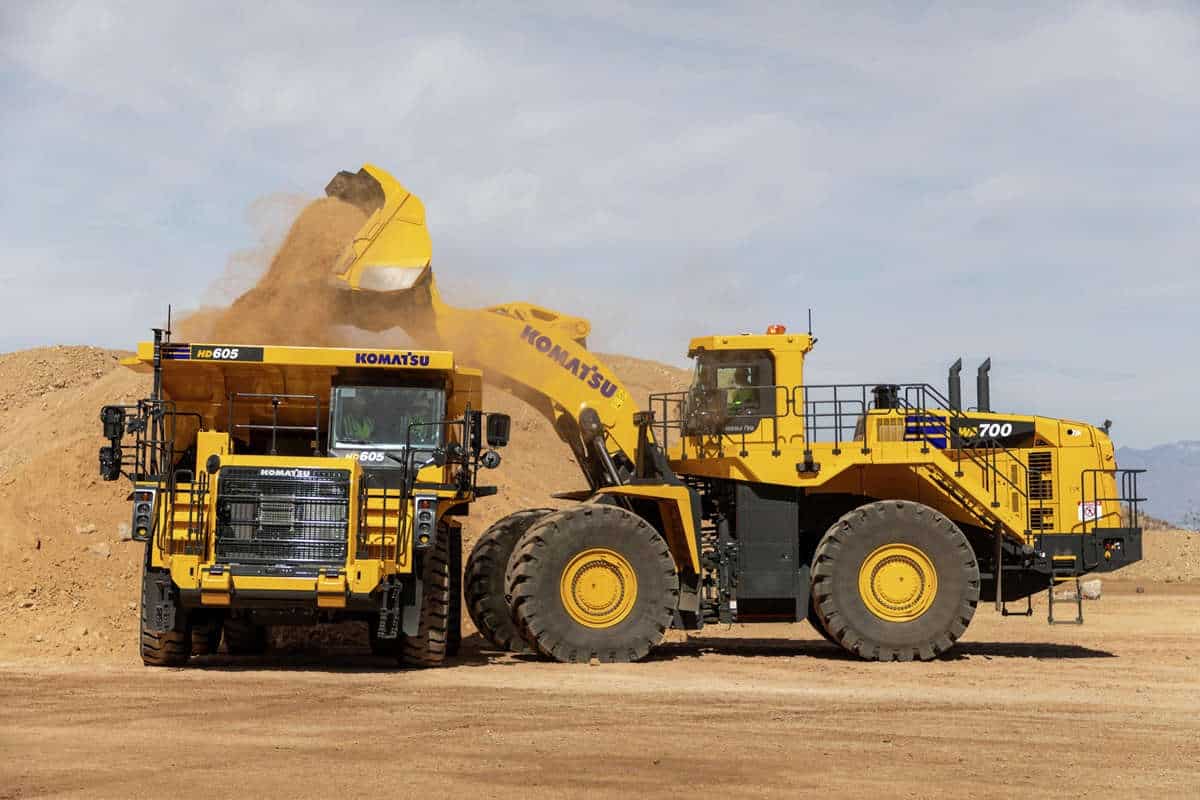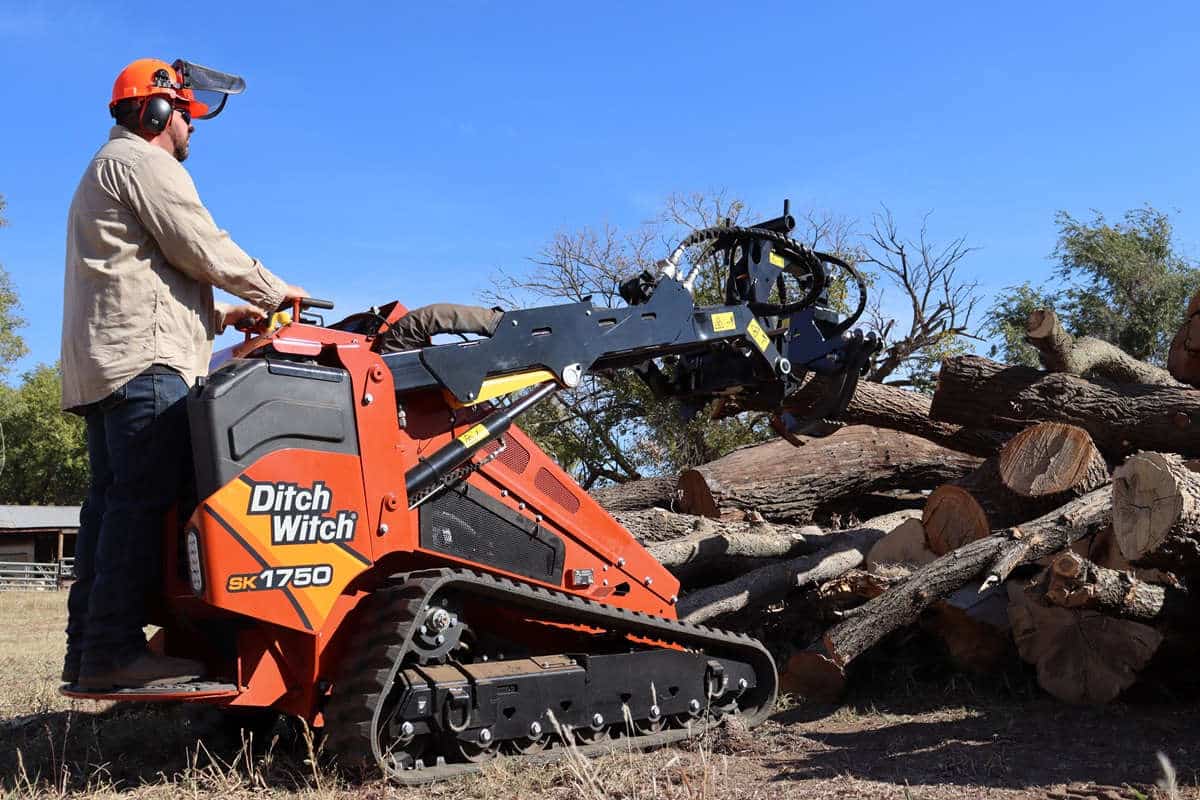Game Changers

Current trends support the growing demand for compact excavators and attachments instead of dedicated underground digging machines. Sales of compact excavators are near pre-recession levels, improving significantly from 2012 to 2013; and as the homebuilding industry continues to recover, there’s reason to believe sales will grow to new heights.
Why Excavators?
One of the primary reasons excavators are often known as the machine of choice for underground utility and excavation projects is because they are well-suited to work in tight areas. This is particularly true when working next to right-of-ways, property lines, existing buildings and other utilities.
“With smaller yards and houses closer together, the old way of utility installation is no longer practical,” says Ronald Cline, Owner of Cline Trenching Service Inc., Bono, Ark. His company owns seven compact excavators for underground utility construction. “All the utilities are frequently packed together. We may have to navigate two phone lines, cable TV, gas, water, sewer and storm drains.”
Central Cable Contractors, an installer of underground telecommunications cable, previously operated larger equipment for underground utility projects. Similar to Cline Trenching Service, the Waupun, Wis., company switched to compact excavators for projects that require a smaller machine. Today, the company owns nearly two dozen compact excavators. The company specializes in delivering fiber to homes, and replacing or upgrading existing buried copper cable with new fiber-optic cable.
“Our first excavator turned out to be powerful, smooth, easy to maintain and very productive,” says Dale Jansen, President of Central Cable Contractors. Jansen says compact excavators are beneficial for utility projects because they provide good visibility to the work area, less ground disturbance, exceptional maneuverability, low fuel consumption, superior operator comfort and easy serviceability.
 Five Must-Have Attachments
Five Must-Have Attachments
While commonly known as digging machines — and they’re certainly efficient at that — compact excavators can do much more, thanks to their exceptional versatility and attachment operation. Five all-star attachments for utility projects include:
1. Trenching Buckets
Trenching buckets are known as the preferred bucket for utility work because they can dig narrow, deep trenches. Owners may add side plates for additional durability, especially when working in tough ground conditions. When finished digging, operators can easily grade, level or backfill the trench with the excavator’s backfill blade.
2. Breakers
When a project calls for removing concrete or asphalt, a hydraulic breaker is the efficient way to quickly eliminate the material. Many manufacturers offer a variety of hydraulic breaker tools to help match the job. When the operator is done breaking the material, it’s simple to switch to a bucket and clamp to load the broken concrete directly into a truck for removal.
3. Plate Compactors
More powerful than hand-operated compactors, plate compactor attachments for compact excavators eliminate the need for a worker in the trench. Operators can compact soil more efficiently on sloped and hard-to-reach areas too.
4. Grading Buckets
For more finesse work, a grading bucket can add contours for proper drainage. Some grading buckets feature a smooth lip for finish grading, cleaning ditches, backfilling and leveling. In some cases, buckets with teeth are strictly prohibited from the jobsite, which makes these buckets a popular choice.
5. Clamps
Commonly paired with a trenching bucket, clamps allow excavator operators to selectively grab heavy objects and move them out of the way, whether it’s putting them off to the side or placing them in trucks to be hauled away.
“There is always something in our way when we get to a jobsite, and we can’t wait for someone else to clear it, so we use the clamp to prepare the jobsite,” says Ronald Dowda, owner of Red Tech Inc., a utility contractor in Covington, La.
An advantage of operating an excavator and attachments vs. a dedicated machine is the interchangeability of attachments. Excavator operators can quickly and easily switch from one attachment to another in just a few minutes. Some quick-change systems for excavators even include a hydraulically powered system where operators simply press a button in the cab to extend or retract the pins that hold the attachment in place.
Accessories
Few jobs are exactly alike, which is why compact excavator operators should be aware of tilt accessories for more precise control of the excavator’s bucket. When paired with a bucket, tilt accessories give operators a greater range of motion to grade contours, create swales and to dig around or under objects.
According to Tom Connor, Bobcat Compact Excavator Product Specialist, a popular trend is adding second auxiliary hydraulics to the excavator. He says this feature allows the operator to dedicate the auxiliary circuit to the clamp, eliminating the need to disconnect it when running other hydraulic attachments such as a breaker.
Connor says excavator owners are putting even more technology to use with the addition of a laser receiver. He says the receiver can help operators achieve and maintain a desired depth or grade for improved productivity and accuracy.
Need More Reach?
When an underground construction project requires an excavator with more dig depth, reach and dump height, there is an option called an extendable arm. Connor says the extendable-arm option is appealing for utility applications largely because owners don’t need to upsize their machine size to gain additional reach. In other words, owners can stay with a same-size machine while adding more reach with the extendable arm, which is often valuable when working in limited-access areas.
“Moving up a machine size could make the difference of closing two lanes of traffic vs. just one,” he says. “In some cases, the extendable arm can give operators as much as 30 in. more reach, which minimizes repositioning the machine and saves operators valuable time. For some customers, their quest is to minimize trailer size requirements along with minimizing traffic disturbance, so getting the most reach out of the smallest machine is their goal.”
When you consider your underground construction equipment, consider sending in a pinch-hitting compact excavator to replace your aging digger, and then give the new excavator a chance at an everyday position in your lineup.
Ryan Johnson is a Copywriter for Two Rivers Marketing, based in Des Moines, Iowa.

 Five Must-Have Attachments
Five Must-Have Attachments


